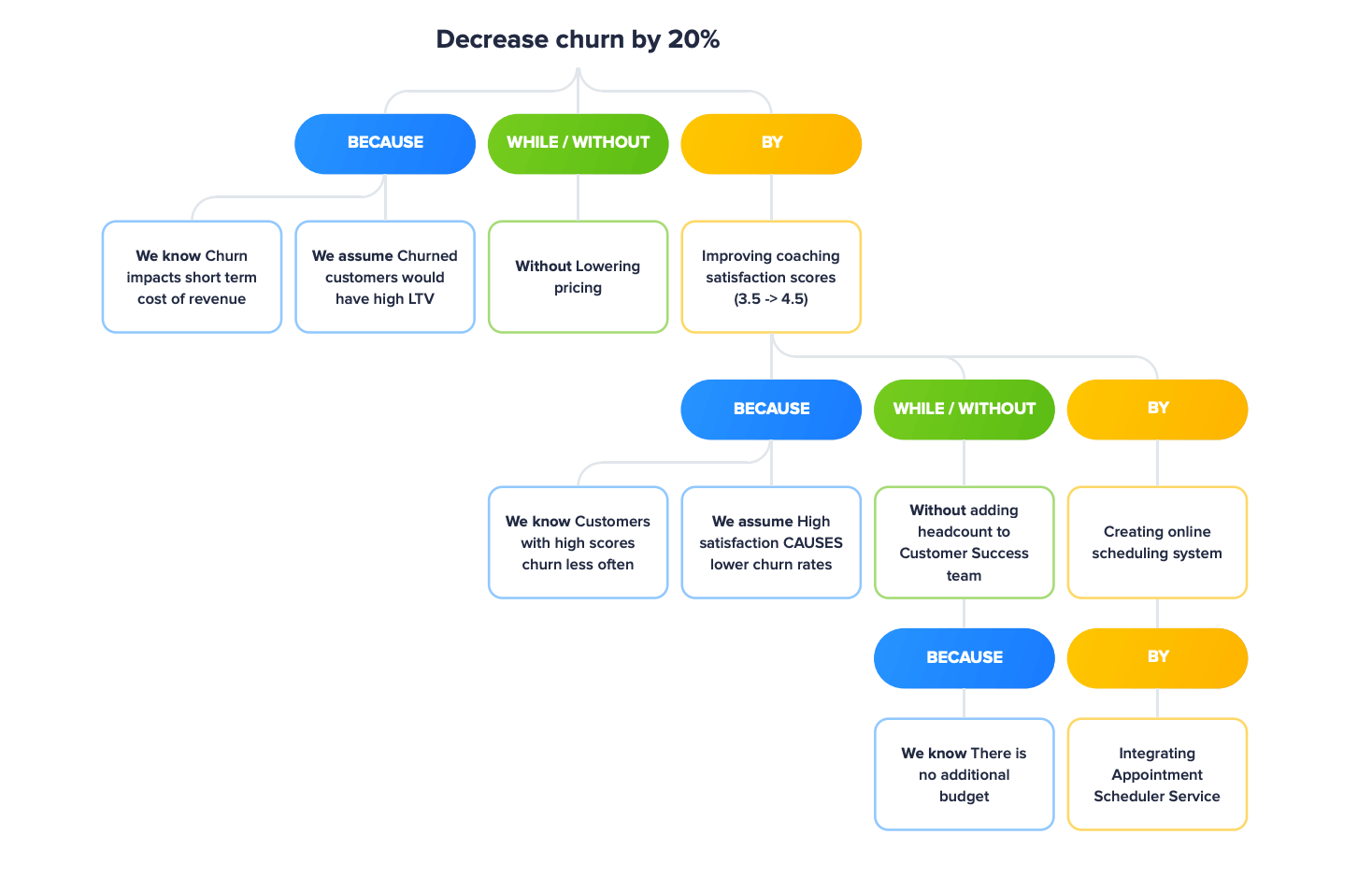John Cutler explains how you can answer tough questions with your product story

Written by John Cutler, Product Evangelist at Amplitude, for our ebook, The Path to Product Excellence: Stories and Advice From the Field.
First, a short assignment Do this. Go to your ticket system, whether its JIRA, Trello, Asana, or even a physical board. Pick a random in-progress ticket (or card, story, task, etc.) that has no parent. Now, try to connect that ticket to a big company goal. Here’s a format you can use:
“We’re working on this ticket to accomplish [the mission of that ticket] to help us achieve [some higher level mission], which will help us achieve [some even higher level mission], which will help us achieve [some even higher level mission]…”
Keep going until you hit a meaningful 12-18 month company goal, such as “decrease churn by 20% in FY2019.” You may even track the ticket to multiple goals.
So, how’d you do? As a product manager, we’re often asked, “why are we even doing this task, where are we going?” Or we’re asked, “what are we doing to achieve this goal?” While we’re good at articulating both the high-level plan and the details of the immediate tasks, it can be challenging to walk the path between those two sides of the spectrum to give compelling answers to those questions.
Create your story with a mind map
Great product managers can answer those two common questions by telling a complete story that connects the immediate work tasks to the broader company goals and vice versa. They can also start at any part of the path and go in either direction.
A helpful way to build these stories is to use a mind mapping exercise. Below is an example mind map for a 12-18 month company goal to reduce churn by 20% in FY2019.

By connects a problem or a goal to a solution and gives us the “how” of our story. In our example, we plan to decrease churn by increasing coaching session satisfaction by creating online scheduling.
Because tells us why we are doing that solution and gives us the “why” of our story. This also ties what we know and what we assume into our story. So, we’re improving satisfaction scores because we know that customers with higher scores churn less often. It’s important to delineate between what we know and what we assume because it’s possible, in our example, that coaching session quality does not affect churn rate and our team should further investigate that.
While and Without give us the constraints of our story. For example, we need to improve coaching satisfaction scores without adding headcount to Customer Success. As we did above, we can also give the reason for each constraint, for example, by saying we can’t add head account because we know there is no budget.
Ideally, you should have a map that connects each of your immediate tasks (tasks that you may accomplish in the next week or two) to your 12-18 month company goals. While this is a simplified example, your map could very well go many levels deep.
Create your map together
Here are some tips to get you and your team to build the mind map.
- Limit the time to 30 minutes, which is the maximum time a team can effectively “play” without taking a break.
- Display the words by, because, we know, we assume, while/ without up on the wall, so they become second nature.
- Have one person volunteer to drive the mind mapping process.
- Move through the map methodically and focus on each box at a time.
- As a warm-up, consider applying the process to something completely unrelated to work, such as picking a lunch spot.
- Don’t go beyond 12-18 month company goals.
- Challenge because we know whenever possible and do not take any assumptions for granted.
- Consider a turn-based approach to give minority viewpoints representation.
. . .
This post is an excerpt from our ebook, The Path to Product Excellence: Stories and Advice From the Field. Get your copy now for more valuable insights from product management thought leaders.


![The CPO’s Blueprint for Annual Planning: An Opportunity to Drive Change [Part 2]](https://www.productboard.com/wp-content/uploads/2024/11/strategy-blueprint-560x293.png)



